Search Images
Browse Content (p. 1329)
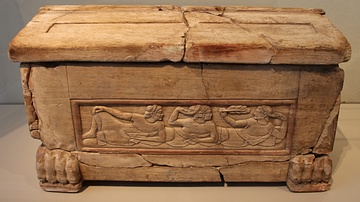
Image
Etruscan Drinking Party
A scene from a stone Etruscan sarcophagus showing a drinking party. Chiusi, 6th century BCE. (Staatliche Museum, Berlin)

Image
Etruscan Banquet Scene
A scene from a stone Etruscan funerary urn depicting a banquet scene. Chiusi, 5th century BCE. (British Museum, London)

Image
Egyptian Protective Knife
An Egyptian apotropaic knife made from a hippopotamus tusk and designed to ward off evil in a nursery. (Oriental Institute Museum, University of Chicago)
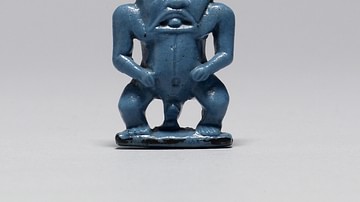
Image
Bes Amulet
A faience amulet of the Egyptian protective deity Bes. Egypt, 950-700 BCE. (Walters Art Museum, Baltimore, Maryland, USA)

Image
Heart Scarab of Hatnefer
A serpentinite and gold heart scarab pendant. Sheikh Abd el-Qurna, Tomb of Hatnefer and Ramose, Mummy of Hatnefer. Thebes. Egypt, 18th Dynasty, c. 1492-1473 BCE. The text inscribed on the back of the scarab calls for Hatnefer's heart not...
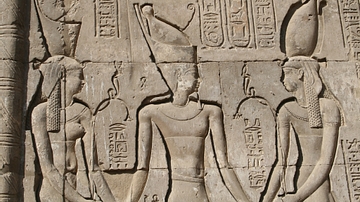
Image
Esna Temple
Detail of the temple wall, Esna, Egypt. The temple was dedicated to the triad of Latopolis.
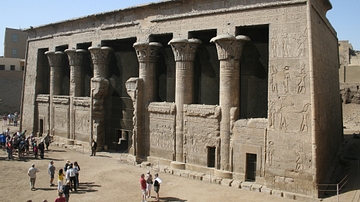
Image
Temple of Esna
Temple dedicated to the triad of Latopolis. Esna, Egypt.
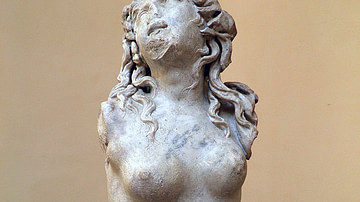
Image
Scylla Marble Statue
Marble statue of Scylla, a monstrous sea goddess who haunted the rocks of a narrow strait opposite the whirlpool daemon Charybdis (Kharybdis). Ships that sailed too close to her rocks would lose six men to her ravenous, darting heads. The...
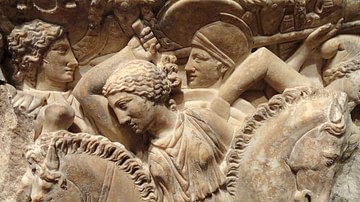
Image
Amazonomachy Detail
Amazonomachy, detail, late 2nd to early 3rd century CE, front and side of a sarcophagus, Roman. Pentelic marble. Exhibit in the Sackler Museum, Harvard University, Cambridge, Massachusetts, USA. The museum permitted photography of this...
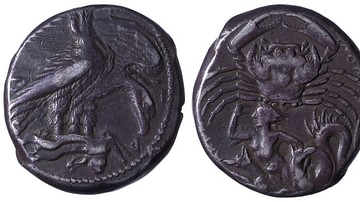
Image
Scylla, Agrigento Coin
A silver coin from Agrigento depicting Scylla the monster from Greek mythology thought to inhabit the straits between Sicily and the Italian mainland. 5th century BCE. (British Museum, London)